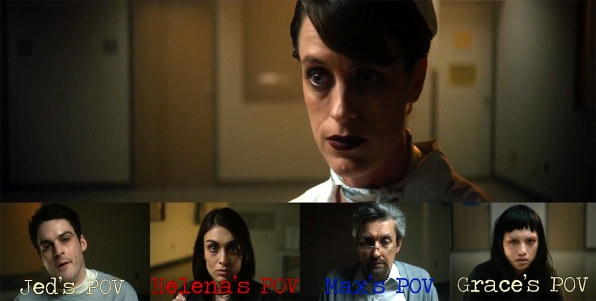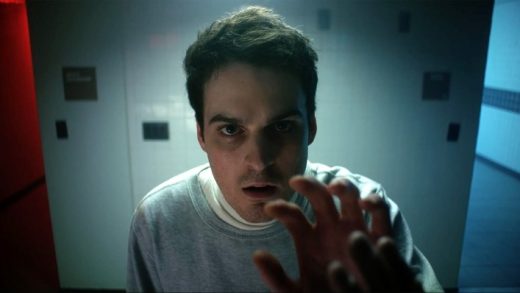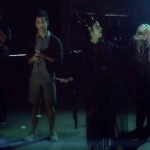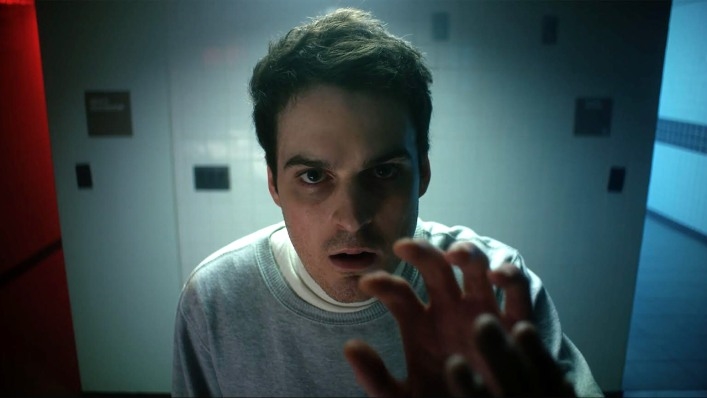“Escape The Asylum” And The Promise Of Interactive Entertainment
When are the voices in your head a sign of insanity, and when are they your salvation? That’s the premise of Chatterbox, a choose-your-own-adventure-style suspense-horror experience in which the audience determines whether the protagonist, Jed, takes his meds, hooks up with other inmates, or trusts the alternate personalities that intrude into his thoughts.
Attempts at allowing the audience to dictate the action–games based on VHS or laserdisc, or nominally interactive arcade titles like Dragon’s Lair—have mostly failed to capture audience imaginations over the past couple of decades. There’s a good reason for that. The interfaces were clunky, the options were limited, and the production values, in most cases, were low. Then video games such as Grand Theft Auto came along and earned a billion dollars, stoking Hollywood’s obsession with non-linear storytelling. That’s mostly led to bad movies based on popular video games, and vice versa.
But as technology matures, and viewers get more sophisticated ways to interact with whatever it is they’re watching, the experiments are getting interesting again. Even some big players are joining the fray: Netflix has launched an interactive kids’ program, Puss in Book: Trapped in an Epic Tale. And next month, HBO is debuting Steven Soderbergh’s Mosaic, a film starring Sharon Stone and Garrett Hedlund, via an interactive app that revolves around the viewer’s experiences.
Chatterbox, which is backed by the experimental entertainment company Adaptive Studios and produced by the media-tech company Eko, is more indie than those other projects. But its creators have cred: They drew on their previous experience with interactive entertainment, namely 2015’s social media murder mystery Virtual Morality, which was produced by Ron Howard and Brian Grazer.
“One of the best lessons we learned from Virtual Morality is that we thought we were making a TV series with a couple of interactive choices,” says writer Ilan Benjamin. “But when it went out to the internet, the audience that connected with it was a gaming audience. And they were frustrated with certain elements of the experience, because they wanted to have a very specific goal, and a very specific result of that goal. So we thought, ‘How do you make this more of a game? How do we give payoff to the viewer? How do we make sure they really have agency?’”
To that end, Benjamin, along with director Mercedes Bryce Morgan, looked to video games for inspiration. The 2015 movie-game Her Story and the classic 1993 puzzle adventure Myst were the biggest influences. To create a narrative with that kind of depth, Chatterbox has more than 500 different choice points, depending on which path the viewer takes. And while a single play-through only takes between eight and 12 minutes, it required shooting more than 40 minutes of final footage in order to account for every potential branch in the storyline.
This is not only an organizational challenge–“We map it all out on a whiteboard, and it looks like a web,” says Morgan–but it creates a continuity nightmare to figure out how one scene connects to 10 others. “If someone does something and gets injured, those injuries need to go back and tie into all of these other situations, or else your continuity is going to jump around,” she says. “So it’s really a brain twist to make sure everything flows together.”

Chatterbox‘s “Chapter 1: Escape the Asylum” is more ambitious in its form than in its production values. The pilot is visually built around dimly lit hallways, and there are a lot of close-ups on character faces instead of, say, sweeping vistas or stunning imagery. The most recognizable name in the project’s cast might be ’70s adult entertainment star Ron Jeremy. But that’s largely how these projects have always worked: The pioneers of interactive film are low-budget, independent projects from creative folks who wanted to play with ideas.
While Chatterbox is more “movie” than “game” in the end, there are strong elements of both contained within the first episode. And ultimately, the question of whether film or gaming is the dominant entertainment medium might become quaint in a few years. With VR technology immersing the audience/player, they could end up being the same thing. That’s Morgan’s expectation for the future, and she’s excited about the way that film and games can converge going forward.
“The dream goal for a project like this is to bring something like it into a VR space,” says Morgan, who is now directing the 10-episode digital continuation of the Stargate franchise. “What VR is lacking in a narrative sense is interactivity. Once those are able to merge, that’s when it’ll really gain popularity.”
Fast Company , Read Full Story
(40)













